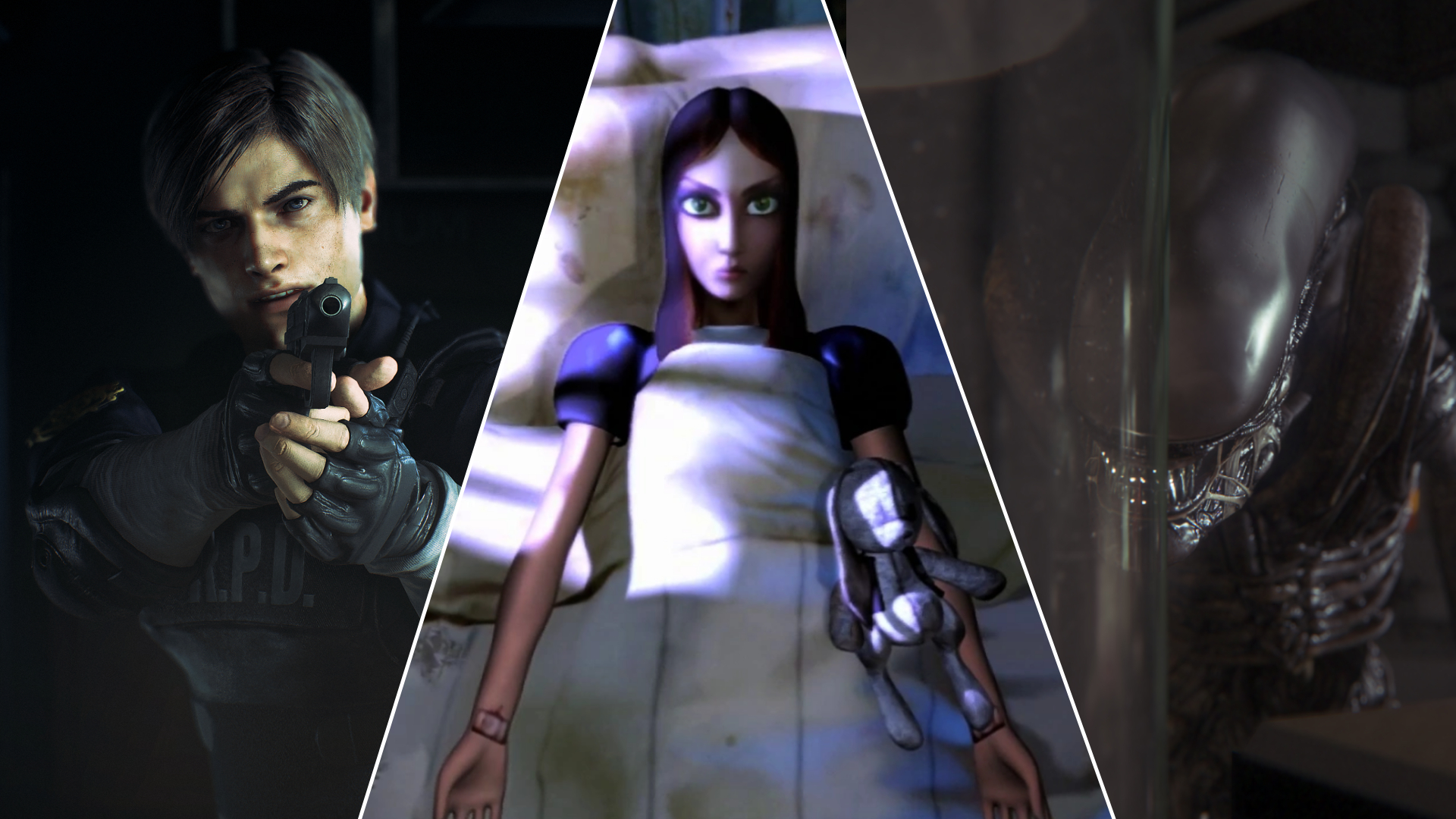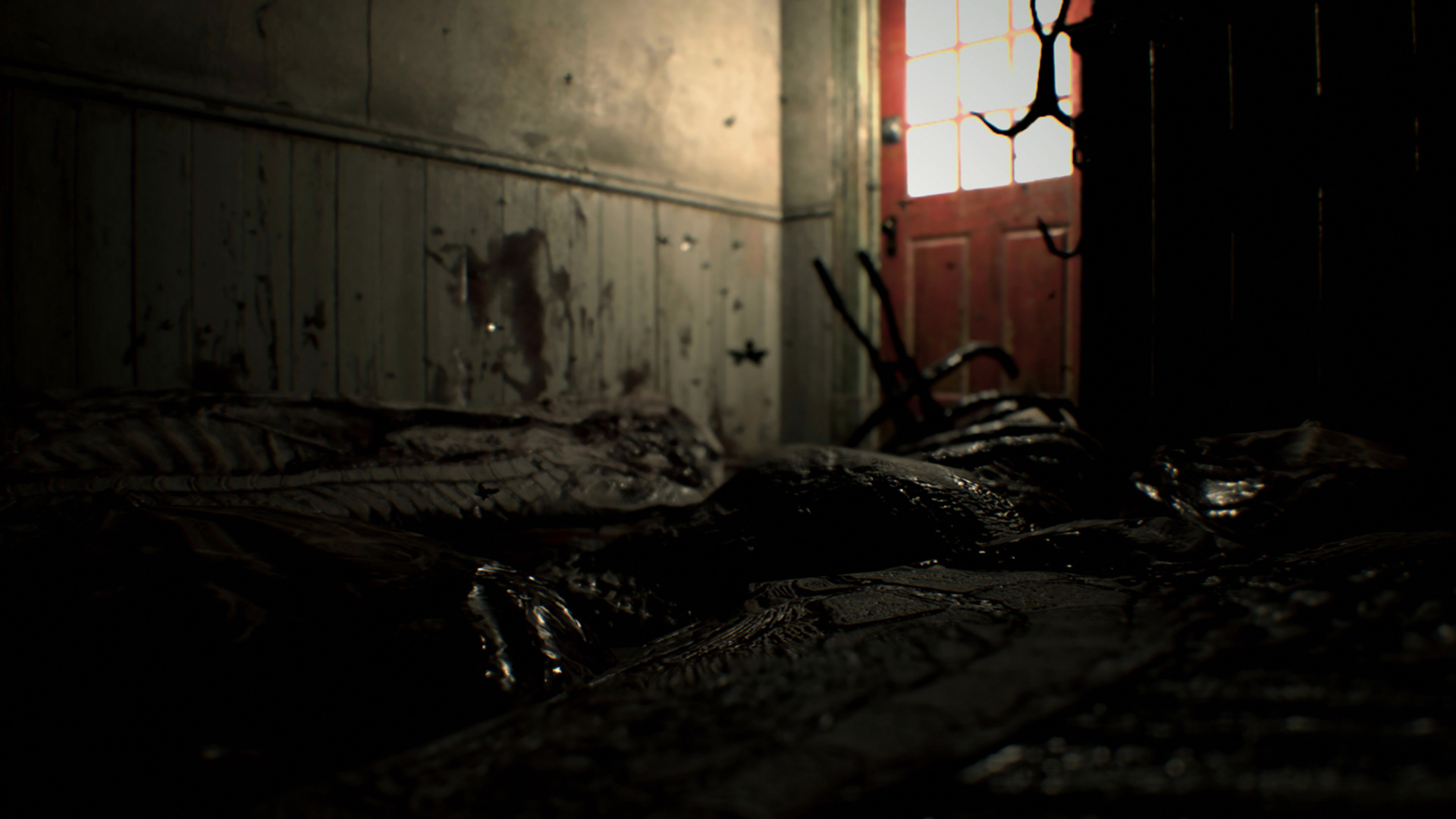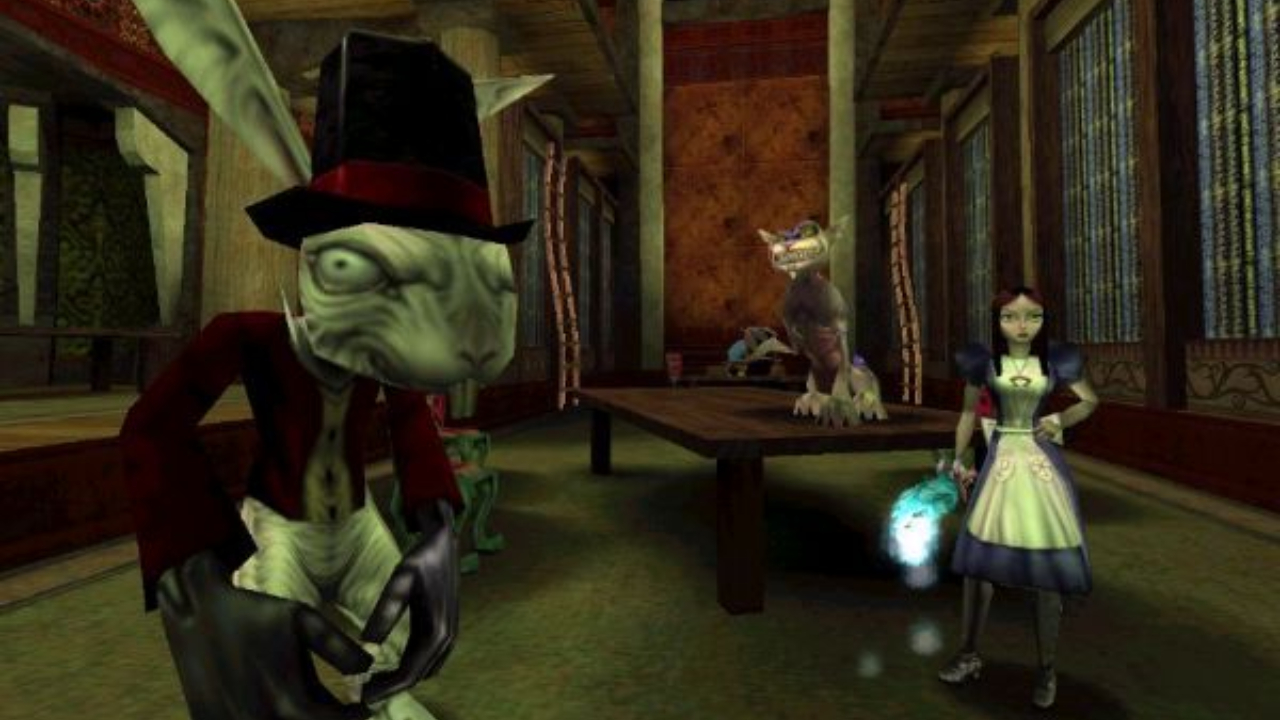The 8 scariest games I've played throughout my video game career
Terror is a beautiful thing

Horror is fascinating in how it locks us in terror, unmoving as an inexplicable creature passes by our peripheal view. Horror games offer a level of terror no other medium can match, imbuing self-doubt at every moment. Being so engaged with what you’re playing that it’s too scary to even enter a room is a phenomenal sensation.
While most of the entries in this list are actual horror games, that isn’t a requirement. Some games have an eerie quality that is more potent in instilling discomfort than what jump scares in dark alleys might accomplish, whether that be through its mechanics, unsettling areas, or the dark themes of its story.
To celebrate the magic of fear, here are the scariest games I’ve ever played, including some unconventional picks.
Resident Evil 2
Resident Evil 2 is certainly not the scariest horror game out there, but it’s absolutely my favorite. Mr. X keeps the player in a state of terror through a constant chase. Mr. X is first introduced with a cutscene of any sort; he just appears from behind some rubble and the player immediately understands that they should run. From there on, he never gives you a break unless you’re in a safe room.

Of course, this is all happening around a zombie apocalypse, but what makes the game special (especially during Claire’s story) are all the little things that surround it. Sherry, a little girl who is kidnapped by the police chief, has to be protected from a crumbling city. One sequence in particular has the player take control of Sherry as she tries to escape from the police chief’s house, which is certainly one of the scarier parts of the game.
Hearing Mr. X’s footsteps from behind the corner of a hall sends the player into panic mode. RE2’s design is especially potent due to the maze-like nature of the police station, as every corridor and room can be committed to memory. This means that whenever Mr. X is nearby, the player has to try and utilize the station’s winding paths to get him off their trail. Combined with strict resource management and the zombies trying to impede your path at every moment, this game is a stressful trip.
Outer Wilds
Outer Wilds isn’t a horror game, and most of the journey isn’t actually scary, but there’s one sequence that instills inexplicable cosmic terror. When the player flies into Dark Bramble, which is a bizarre wormhole-esque phenomenon embedded within the branches of a planet’s core, they’ll appear in a foggy realm with a heavily limited view distance. All the player can see are faint glowing lights, but as they fly further and further through, they’ll suddenly hear the growling of a creature that wants to devour them. Those lights turn out to be little bulbs emitting from gigantic angler fish mixed with lights coming from other little wormholes that can transport you to different parts of Dark Bramble.
Sign up to receive The Snapshot, a free special dispatch from Laptop Mag, in your inbox.

Being trapped on a tiny spaceship in an endless realm with limited view as monstrous angler fish growl and gnaw at you is genuinely terrifying. Complete silence being offset by the noises of a creature you cannot see, but know it’s somewhere around you while you’re helplessly floating through space is horrific.
Phasmophobia
Phasmophobia is the perfect horror game to play with friends, but the presence of your buddies won’t brace you for its terror. No matter how many times I jump into it, I never seem to get used to that sensation of being alone in a haunted house and it being far too dark to see anything whatsoever.

Anticipation is Phasmophobia’s greatest source of tension. An apparition getting you isn’t particularly scary, yet for some reason, every step up to that point is spine-chilling. This is a game that knows to utilize overwhelming darkness to its advantage; even when every light in a building is on, the game has a dingy, decrepit aura that makes even the average living room look like the hunting grounds for a monster. Coupled with a complete lack of music and a focus on the constant atmospheric hum interrupted by occasional bangs and whispers turns this into a goosebump-inducing trip.
When an apparition begins its hunt, the flickering of a player's flashlight and the static coming over the radio makes it impossible to hear other players besides from the ones beside you. And even then, it’s strongly encouraged that they don’t speak or the monster will know where to travel during its hunt. Encouraging the player to use the in-game voice chat to heighten immersion is great, and it adds a great deal of cooperative terror to the experience.
Alien: Isolation
You’re being hunted. Alien: Isolation revolves around this core concept, and although there are moments where the chase is put to a pause, “Where is it?” never stops being the question at the front of the player’s mind. The Xenomorph boasts its own artificial intelligence that’s meant to learn from and adapt to the player’s actions, focused on pitting players against a real pursuer rather than a villain that’s used just for jump scares or scripted chase scenes.

Instead, every moment is coupled with uncertainty. Consciously understanding that the Xenomorph directly responds to your actions makes each moment a fight against something that feels alive. It can be easy for a horror game to feel too on-rails, directed by specific enemy placements or a monster that only appears at key moments. But Alien: Isolation subverts those expectations and makes the player feel the full force of the Xenomorph’s wit.
Demon's Souls
Soulsborne is scary, but Demon’s Souls has its deepest roots in horror. Much of this game relies on making the player feel powerless in face of the terrors that inhabit each world. There are specific sequences in Demon’s Souls that instilled a deeper sense of dread within me than most other horror games. I think back to Upper Latria, when I innocently stepped into a cage hooked onto a chain before swiftly plummeting thousands of feet from the top of the world into the swelling pits of a crimson swamp. Fleshy monstrosities with frozen, disfigured faces leapt at me as I traveled between rickety wooden platforms in this dark pit.

The presence of anyone and anything is coupled with terror. The later games in the series focus more on the action, and while they still have weird enemy designs, Demon’s Souls’ are the most abstractly terrifying. Traveling through the Swamp of Sorrows and having disfigured zombies rush at the player as they trudge through viscous bile and dodge around gigantic mosquitos is straight out of a nightmare.
See our full Demon’s Souls review.
Resident Evil VII
Resident Evil 7 is terrifying in its own right, but it’s easily the most mortifying video game experience I’ve had due to the circumstances in which I played it. Those circumstances were, of course, through PSVR.

I’ll never forget seeing through the eyes of Ethan as he’s captured by the Baker family, strapped to a chair and senselessly tortured by Jack. Considering it was my first time playing in VR, my brain had trouble processing if what I was seeing was real or not. This sensation overwhelmed me in full force when Jack stabs Ethan in the eye, a scene that my brain visually translated as my body actually about to be stabbed in the eye.
It was as if every part of me tried to brace for that impact, and when it entered, my mind created the briefest sensation of faux-pain in anticipation. Then when it felt nothing happen, a brief moment of bewilderment followed. I’ll never forget how that felt, and although every proceeding moment of Resident Evil 7 VR got less and less painful, it was like I had to constantly convince myself to enter each and every room.
American McGee's Alice
American McGee’s Alice is a sinister fairytale. It harbors an atmosphere that burrowed itself into my mind and refused to leave; it’s a discomforting experience that has stuck with me years after playing, even though it’s not technically a horror game. It has no jumpscares, no overly dark hallways, and no unkillable monsters chasing you throughout a labyrinthian mansion.
If it wasn’t already clear, this is a non-canon sequel to the original Alice in Wonderland. You play as an adult Alice who finds her way back to Wonderland after many years, mortified by how much everything has changed. It’s no longer filled with whimsy and color, instead finding itself in a position of malformed corruption. Senseless death and seemingly endless enslavement have befallen much of Wonderland’s inhabitants, and the return of Alice is a signal that this torment could finally be over.

American McGee’s Alice’s theme of lost innocence is striking. Alice is now an adult who has found herself back to her childhood land of fantasy. But because of the trauma she has faced and the darkness that has seemingly overcome her, it has become a nightmarish world. Every chapter of this game unveils new details about Alice’s life that are directly interlinked with events occurring within Wonderland itself. It’s almost as if its inhabitants are spiteful towards her, accusatory and constantly angry that she could allow the place to get to such an awful state.
Throughout much of the game, it’s clear that Alice’s psyche is directly linked with what happens in Wonderland. And as we get closer to its finale, we realize that Alice is struck with immense grief as she’s overwhelmed with visions of the Liddel family home burning to ashes. Her parents and her sister were made victims, with the Jabberwock blaming her for the death of her family.
One quote from the Jabberwock in particular makes the core of Alice’s trauma clear: “You smelled the smoke. But you were in dreamland taking tea with your friends. You couldn't be bothered. Your room was protected and spared – while your family upstairs roasted in an inferno of incredible horror.”
Beyond its sinister character designs and creepy environments, American McGee’s Alice is rooted in trauma and self-loathing. It’s not technically a horror game, but these themes have stuck with me in ways that are more unnerving than even the most terrifying horror games have accomplished.
SCP: Containment Breach
Mechanically, SCP Containment Breach is the scariest single-player game I’ve played. Its foundation is intrinsically tied to the lore of SCP itself, an organization that deals in containing and securing a series of mysterious phenomena, each designated identification numbers and threat levels. Within the game, the player takes the role of an unnamed prisoner who gets caught in the middle of a sudden breach; a multitude of these creatures (SCPs) have been let out, and you need to escape.

Each SCP has its own set of rules, to the point where they might not even be a creature but an inanimate object with mysterious qualities. For example, SCP-1499 is a simple-looking gas mask that causes the wearer to vanish from sight when it’s put on, appearing in a mysterious alternate dimension until removed. But not every SCP is as passive, as each boasts a specific set of rules that the player needs to memorize and understand to get past them.
What makes Containment Breach genuinely scary is that the player is freely roaming through a randomly-generated facility that these creatures traverse based on artificial intelligence. Programmers haven’t scripted specific scenes that occur; instead, the player needs to always be on the lookout for creatures who act on their own accord. Unlike most horror games, the player is organically left alone with monsters on the hunt.
Honorable mention: Super Mario 64
Super Mario 64 is anything but a horror game. In fact, it’s joyously nostalgic and a source of great childhood memories for many of us. But it’s always had an eerie darkness surrounding it. Some of its levels freaked me out as a kid, but that remained the case when I replayed the game last year. Hazy Maze Cave in particular, which is a claustrophobic rocky tunnel system occupied by creepy bugs that feels like it’s at the bottom of the world, made me seriously uncomfortable.

Wet-Dry World is also memorably discomforting, as it’s an entire city that has been completely flooded and abandoned. The implications here are dark, especially when you look out into the distance and see the background image for the world is a claustrophobic, surreal city with buildings overly squished together. If you look towards the top of this image, there’s a bright sun gleaming through an expansive oceantop, clearly suggesting that this entire city was submerged and its inhabitants likely did not survive.
Every level in Super Mario 64 is inexplicably lonely. This might just be a result of the N64’s technological capabilities, but Mario is constantly alone with weird creatures as he runs through these surreal worlds. The very idea of hopping between paintings is especially eerie, as it suggests he’s exploring uninhabited snapshots of places attempting to mimic reality. The question of the paintings’ existence and their significance is similarly perplexing. So yes, while Super Mario 64 is not a horror game, the nonsensical qualities that make up each level make it feel dreamlike, and upon reflection, there’s something genuinely terrifying about its weirdest qualities.

Self-described art critic and unabashedly pretentious, Claire finds joy in impassioned ramblings about her closeness to video games. She has a bachelor’s degree in Journalism & Media Studies from Brooklyn College and five years of experience in entertainment journalism. Claire is a stalwart defender of the importance found in subjectivity and spends most days overwhelmed with excitement for the past, present and future of gaming. When she isn't writing or playing Dark Souls, she can be found eating chicken fettuccine alfredo and watching anime.
